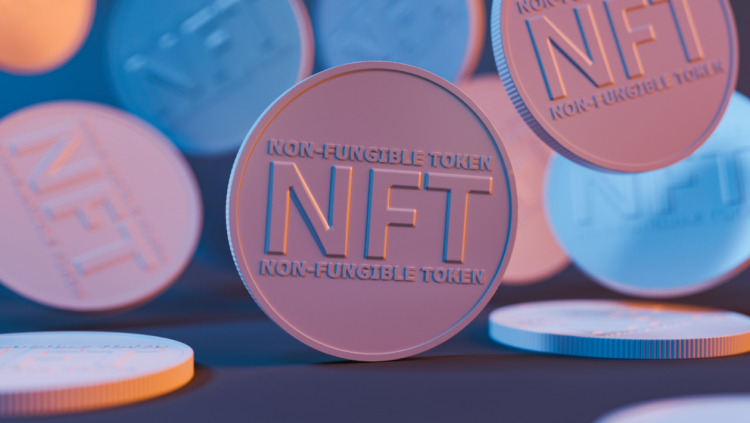Introduction
In the fast-paced world of digital transformation, Web3 has emerged as a revolutionary concept that promises to redefine the way we interact with the internet. Unlike its predecessors, Web1 and Web2, Web3 is centered around decentralization, transparency, and user empowerment. One of the most significant innovations driving this transformation is the rise of Non-Fungible Tokens (NFTs)—unique digital assets that are poised to become a foundational element of a decentralized web.
NFTs, built on blockchain technology, are unlocking new forms of digital ownership, content creation, and value exchange. As Web3 continues to evolve, NFTs are becoming indispensable in shaping a future where individuals, rather than centralized corporations, hold the reins of their online identities and assets. In this article, we will explore the rise of Web3, the role of NFTs, and how they are poised to revolutionize the digital landscape.
1. Understanding Web3
1.1 The Evolution from Web1 and Web2 to Web3
To appreciate the significance of Web3, it is essential to understand its predecessors.
- Web1 (the early internet, from the 1990s to early 2000s) was static and primarily informational. Websites were read-only, and there was little interaction between users and the content.
- Web2, which began around the mid-2000s, introduced dynamic content and social interaction. Platforms like Facebook, Twitter, and YouTube allowed users to generate content, share their thoughts, and connect with others. However, Web2 came with its drawbacks: centralization of power, loss of privacy, and the dominance of a few large corporations.
Now, Web3 is emerging as the next phase in the internet’s evolution. Unlike Web2, which relies on centralized platforms, Web3 leverages blockchain and decentralized networks to enable peer-to-peer transactions, digital ownership, and more autonomous user interactions. By decentralizing control and reducing reliance on intermediaries, Web3 promises to create a more open, transparent, and user-driven internet.
1.2 Key Characteristics of Web3
Web3 is distinguished by several groundbreaking features:
- Decentralization: Web3 eliminates the need for central servers or controlling entities. Information is stored on a distributed network of nodes, reducing the risk of censorship and enhancing security.
- Blockchain Technology: Blockchain serves as the backbone of Web3, providing transparency and immutability. Smart contracts on blockchains like Ethereum enable trustless transactions between users.
- Digital Ownership: Web3 shifts the paradigm of digital ownership. Instead of relying on corporations to control data, users have full ownership of their digital assets, whether they are cryptocurrencies, NFTs, or personal data.
- Incentive Structures: Web3 uses tokens and decentralized finance (DeFi) mechanisms to incentivize participation. This facilitates new economic models that benefit creators, developers, and users.
2. The Rise of NFTs
2.1 What Are NFTs?
Non-Fungible Tokens (NFTs) are digital tokens that represent ownership or proof of authenticity of a unique asset. Unlike cryptocurrencies such as Bitcoin or Ethereum, which are interchangeable (fungible), NFTs are one-of-a-kind. This uniqueness is what makes NFTs so valuable, particularly in the realms of art, music, and digital collectibles.
NFTs are typically minted on blockchain platforms like Ethereum, where each token is associated with specific metadata that confirms its individuality. This could be a digital artwork, music track, video clip, virtual real estate, or even in-game assets.
2.2 The Blockchain Backbone of NFTs
At the heart of NFTs lies blockchain technology. Blockchains, such as Ethereum’s ERC-721 standard, allow NFTs to be created, bought, and sold in a transparent, immutable, and secure manner. Each transaction involving an NFT is recorded on the blockchain, creating an easily traceable history of ownership.
The transparency offered by blockchain technology ensures that digital assets cannot be replicated or counterfeited, making NFTs the perfect solution for proving ownership and authenticity in the digital world.
2.3 Milestones in the NFT Boom
NFTs began gaining traction in 2017 with projects like CryptoPunks and CryptoKitties, which allowed users to collect and trade unique digital characters. However, it wasn’t until 2021 that NFTs truly exploded into mainstream consciousness.
- Beeple’s NFT Sale: The most significant milestone in the rise of NFTs was Beeple’s sale of his digital artwork “Everydays: The First 5000 Days” at Christie’s for a staggering $69 million.
- NFT Marketplaces: Platforms like OpenSea, Rarible, and SuperRare emerged, creating spaces for creators and collectors to trade NFTs in a decentralized manner.
These events cemented NFTs as a legitimate form of digital ownership, far beyond the realms of gaming and art.

3. NFTs: Key Drivers of Decentralized Internet
3.1 NFTs and Digital Ownership
One of the key innovations of NFTs is their ability to establish true digital ownership. In Web2, digital content is controlled by platforms like Facebook, YouTube, and Instagram, where users generate content but do not truly own it. Platforms control the distribution, monetization, and rights associated with digital media.
NFTs, however, allow creators to mint their work into unique, verifiable digital tokens. When a user purchases an NFT, they are not just buying a digital file but an authentic, tradable token that represents ownership. This ownership is recorded on the blockchain, which guarantees its validity and scarcity.
In Web3, this shift enables users to truly own their online identities and assets. Whether it’s digital art, music, or even social media posts, NFTs provide a mechanism for individuals to control and profit from their creations.
3.2 NFTs in Social Media and Digital Identities
Web3 promises to give users more control over their digital identities. In traditional social media platforms, users generate content and build communities, but they do so on platforms that ultimately belong to corporations. These platforms can censor, manipulate, or even shut down user accounts at will.
In contrast, NFTs allow users to build decentralized digital identities that are not controlled by any one entity. For instance, NFTs can represent unique social media profiles, badges, or even digital resumes, allowing individuals to take their identities with them across platforms. This transforms the social web into a more open and user-driven ecosystem.
3.3 NFTs and the Creation of New Economic Models
NFTs are facilitating entirely new economic systems. Instead of relying on centralized platforms to mediate transactions, NFTs allow for peer-to-peer exchanges. Creators can sell their work directly to buyers, cutting out the middleman.
Moreover, NFTs are enabling play-to-earn models in gaming, where players can own, trade, and sell in-game assets as NFTs. These assets can range from skins to virtual real estate, and players can earn tokens that can be exchanged for real-world value.
3.4 NFT Marketplaces: A New Paradigm
NFT marketplaces are a critical part of the Web3 ecosystem. Platforms like OpenSea, Rarible, and Foundation have created decentralized spaces where users can mint, buy, and sell NFTs. These marketplaces eliminate the need for intermediaries and facilitate direct interaction between creators and buyers.
This shift to decentralized marketplaces is a game-changer for the global economy, allowing for more equitable revenue distribution and greater accessibility to creative opportunities.
4. The Challenges and Controversies
While NFTs hold great promise, they are not without challenges:
- Environmental Concerns: Blockchain transactions, particularly those on proof-of-work networks like Ethereum, consume significant energy. This has led to concerns about the environmental impact of NFTs, although shifts toward more energy-efficient networks (e.g., Ethereum 2.0) are addressing this issue.
- Speculation and Volatility: The NFT market has become a speculative frenzy, with some assets selling for astronomical prices. This has raised questions about the long-term sustainability of NFT investments.
- Legal and Regulatory Issues: As NFTs continue to grow, governments and regulators are grappling with how to classify them in terms of taxation and intellectual property law. The legal landscape is still evolving.
5. The Future of Web3 and NFTs
The future of Web3 and NFTs is bright, with numerous possibilities on the horizon. As more industries embrace NFTs, their use will expand beyond art and collectibles. NFTs could revolutionize fields like education, real estate, finance, and more.
- NFTs in Real Estate: Virtual real estate in platforms like Decentraland and The Sandbox is already a thriving market. These virtual spaces could eventually mirror the physical real estate market.
- Interoperability: One exciting aspect of Web3 is the potential for cross-platform interoperability. NFTs could be used across different dApps and blockchain networks, creating a seamless experience for users.
The decentralized web promises a more open, transparent, and user-centric internet, where individuals have more control over their data, assets, and identities.
Conclusion
The rise of Web3, combined with the transformative power of NFTs, is set to reshape the internet as we know it. Web3 offers a decentralized, user-controlled ecosystem that challenges the dominance of centralized platforms, while NFTs provide a new paradigm for digital ownership and creativity. Together, they are paving the way for a more inclusive and transparent digital future. As these technologies continue to evolve, they will unlock new opportunities for creators, developers, and users, driving a more decentralized and equitable internet.

















































